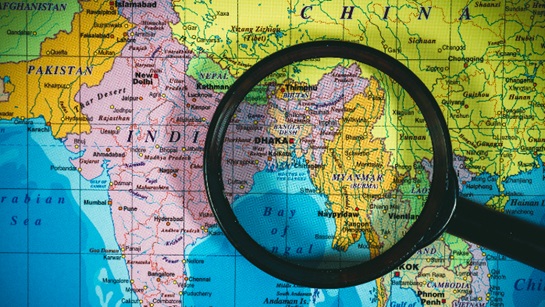 15-01-2020
15-01-2020
South Asia:GDP growth rate in 2019 falls, forecast to improve thereafter

 Insurance Alertss
Insurance AlertssSouth Asia:GDP growth rate in 2019 falls, forecast to improve thereafter
Growth in South Asia is estimated to have decelerated to 4.9% in 2019, substantially weaker than 7.1% in the previous year, reflecting a sharper-than expected and broad-based weakening in domestic demand, says the World Bank.
In its flagship Global Economic Prospects report, the World Bank says that the deceleration was pronounced in the two largest economies, India and Pakistan. Weak confidence, liquidity issues in the financial sector (India), and monetary tightening (Pakistan) caused a sharp slowdown in fixed investment and a considerable softening in private consumption.
Outlook
Growth in South Asia is projected to gradually pick up over the forecast period, from 4.9% in 2019 to 6% in 2022. This projection assumes a modest rebound in domestic demand. The weak global trade outlook will continue to weigh on regional export growth in the near term. Regional economic activity is expected to benefit from policy accommodation (India, Sri Lanka), improvement in business confidence and support from infrastructure investments (Afghanistan, Bangladesh, Pakistan).
In India, weakness in credit from non-bank financial companies is expected to linger. Growth in India is projected to decelerate to 5% in FY2019/20 amid enduring financial sector issues. Policy measures such as enhancing foreign direct investment inflows and competitiveness, promoting access to finance for small enterprises, and improving infrastructure can deliver productivity gains and lift growth in the region. Growth is expected to gradually recover, to 6.1% in FY2021/22.
In Pakistan, macroeconomic adjustment, including a continuation of tight monetary policy and fiscal consolidation, is expected to continue. Growth is projected to bottom-out at 2.4% in FY2019/20 (July 2019-June 2020). Thereafter, as macroeconomic conditions improve and structural reforms support investment, growth is projected to steadily advance, reaching 3.9% by FY2021/22.
Growth in Bangladesh is projected to remain above 7% throughout the forecast horizon. A solid macroeconomic framework, political stability, implementation of planned public infrastructure projects, and ongoing reforms to improve the business environment underlie this projection.
Sri Lanka’s growth is projected to advance to 3.3% in 2020. The acceleration afterwards will be supported by recovering investment and exports, as long as the security challenges and political uncertainty of 2019 dissipate. Growth is seen to stabilise around 3.7% over the rest of the forecast horizon, in line with potential growth.
In Afghanistan, activity is expected to continue accelerating, assuming a stable political transition after elections and a subsequent improvement in business confidence. Nepal’s economy is projected to grow at about 6.5% through 2022, supported by strong services and construction sector activities, amid buoyant tourist arrivals and rising public spending.
Growth in Bhutan and Maldives will continue to be underpinned by tourism and infrastructure projects, over the forecast horizon averaging 6.5% and 5.6%, respectively.
Risks
Key risks to the outlook include a sharper-than-expected slowdown in major economies, a reescalation of regional geopolitical tensions, and a setback in reforms to address impaired balance sheets in the financial and corporate sectors.
Source: Asia Insurance Review
